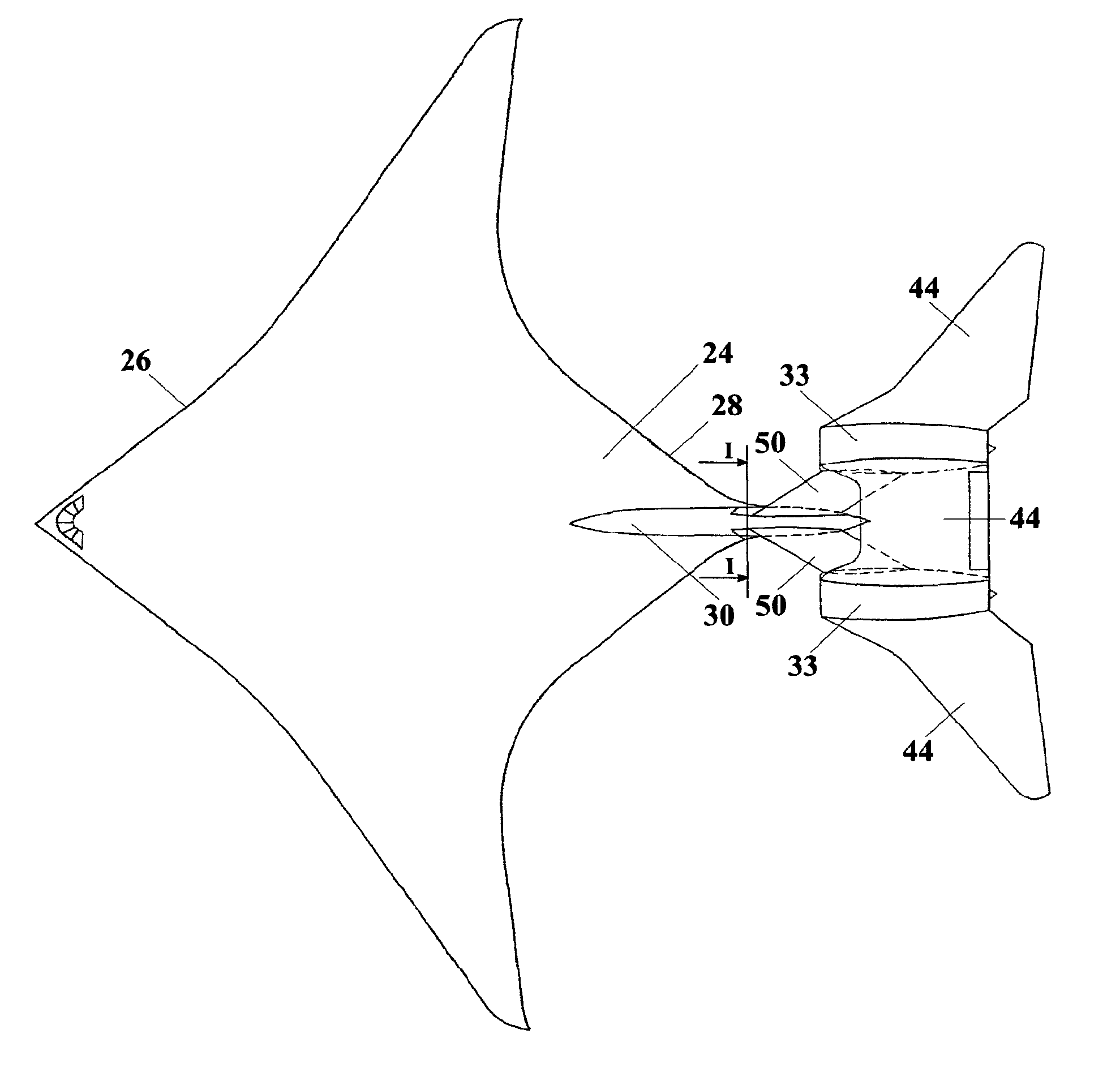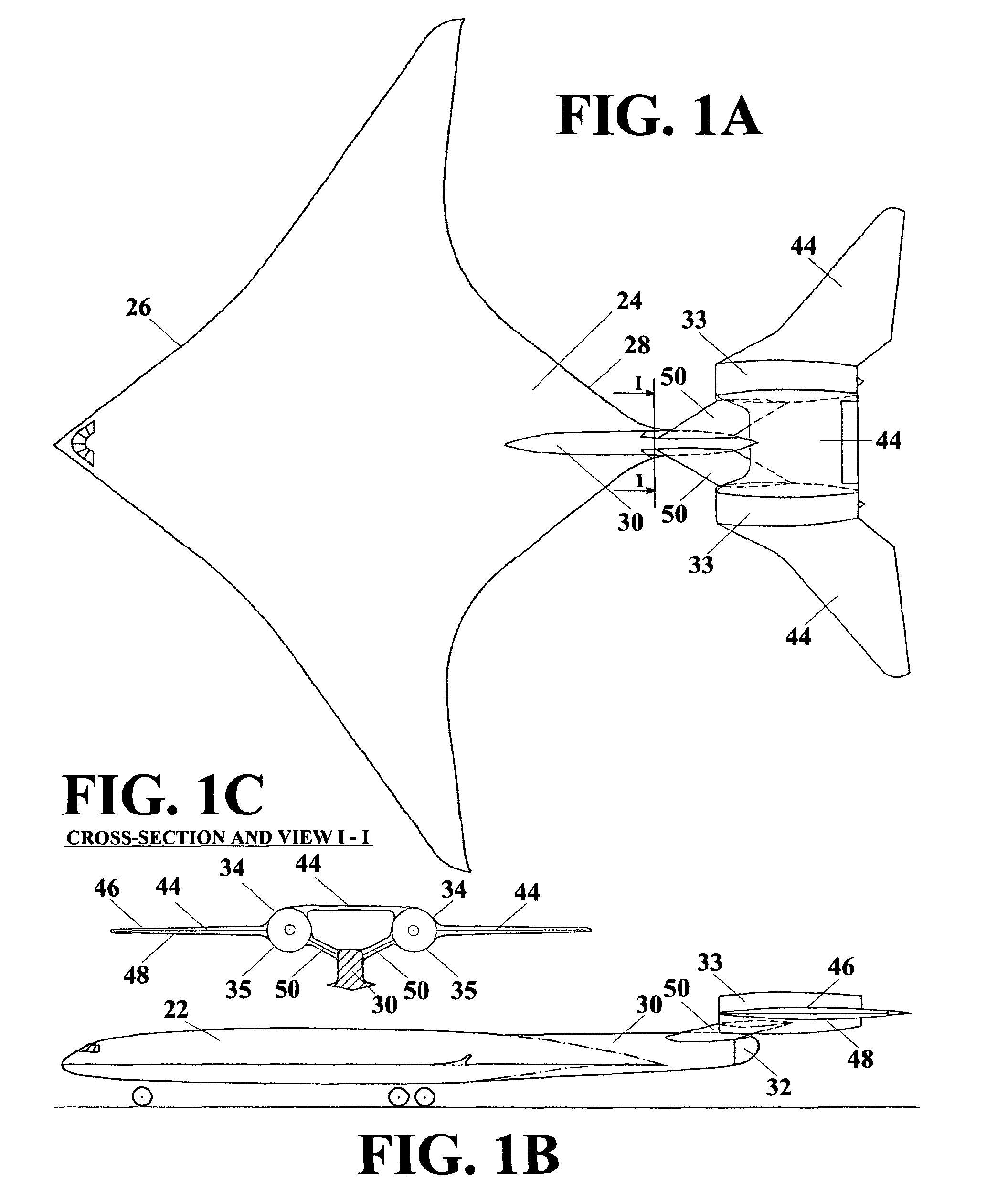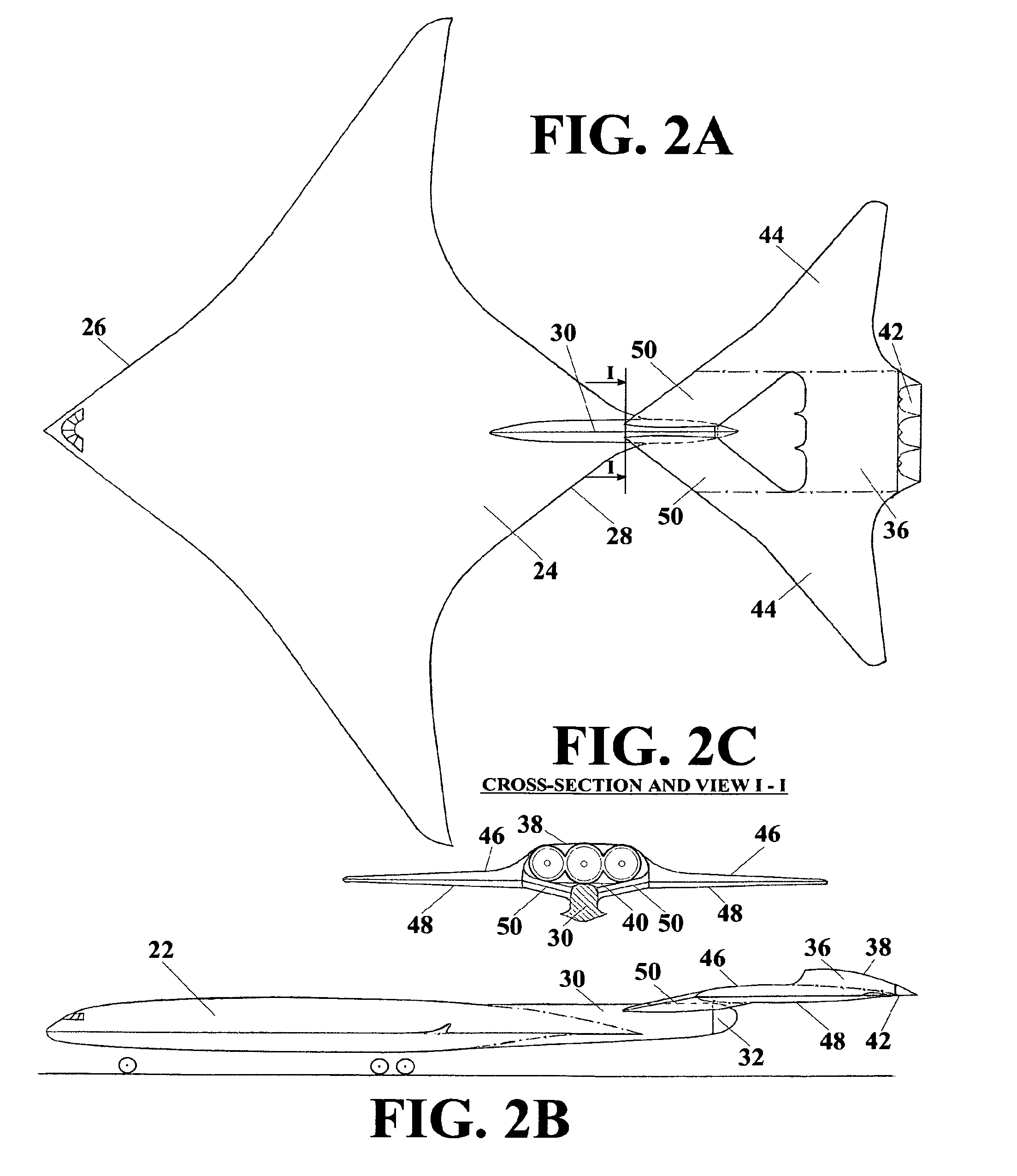Longitudinal flying wing aircraft
a flying wing aircraft and longitudinal technology, applied in the direction of wing shapes, fuselages, transportation and packaging, etc., can solve the problems of low aerodynamic efficiency of such aircraft, the integral rigid airlifting body of tailess flying wing aircraft cannot meet several simultaneous and contradictory problems, and achieve the effect of increasing the natural longitudinal dynamic stability of longitudinal flying wing aircra
- Summary
- Abstract
- Description
- Claims
- Application Information
AI Technical Summary
Benefits of technology
Problems solved by technology
Method used
Image
Examples
Embodiment Construction
[0042]FIG. 1 shows a Longitudinal Flying Wing jet aircraft that is powered by two lateral jet engines. The Longitudinal Flying Wing aircraft as shown in FIG. I is composed of front wing (22), two lateral jet engines with rigid aerodynamic covers thereof (33), rear wings (44), and V-tail (50). Front wing (22) is the largest aerodynamic body of the Longitudinal Flying Wing aircraft that is providing for the highest amount of aerodynamic lift, while carrying the largest amount of fuel. Front wing central section (24), which is having the longest chord is housing bulky payload, cockpit, and landing gears. Fronts wing central section (24) is having vertical aft reinforcement (30) that is aerodynamically shaped in airflow direction and extending far behind mean geometric chord of front wing (22). V-tail (50) which carries rear wings (44), jet engines, and jet engine aerodynamic covers (33) is fastened on its bottom to the rear portion of vertical aft reinforcement (30). The airframes of a...
PUM
 Login to View More
Login to View More Abstract
Description
Claims
Application Information
 Login to View More
Login to View More - R&D
- Intellectual Property
- Life Sciences
- Materials
- Tech Scout
- Unparalleled Data Quality
- Higher Quality Content
- 60% Fewer Hallucinations
Browse by: Latest US Patents, China's latest patents, Technical Efficacy Thesaurus, Application Domain, Technology Topic, Popular Technical Reports.
© 2025 PatSnap. All rights reserved.Legal|Privacy policy|Modern Slavery Act Transparency Statement|Sitemap|About US| Contact US: help@patsnap.com



